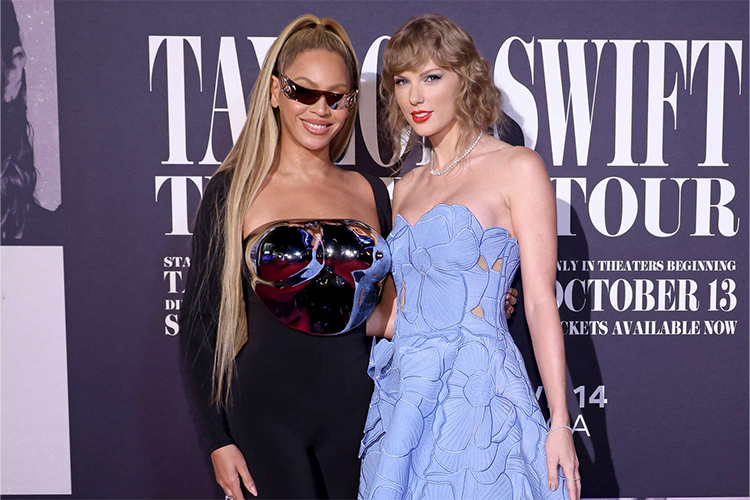
It started all the way back in 1948 with Concert Magic, and now the legacy continues with Taylor Swift’s Eras Tour and Beyonce’s Renaissance. photo by John Shearer/Getty Images
Global superstars are putting film crews on their stages during sets to get up-close, high quality results for fans who either couldn’t afford front row seats or missed out on the concert experience entirely.
Concert movies have evolved significantly over time, adapting alongside changes in technology, audience preferences, and the music industry. In the early days, concert films like “Woodstock” captured the essence of live performances in the 70’s, while the 80’s saw the rise of music videos. This phenomenon certainly influenced the cinematic elements and storytelling in filmed performances such as the Talking Heads’ “Stop Making Sense” music video, where the band presented a concert as a narrative experience.
Advancements in filming techniques and equipment later allowed for more dynamic and visually engaging productions. The digital age saw high-definition cameras and sophisticated editing tools that enhanced the visual and audial quality in concert movies. Superstars are no stranger to recordings of their concerts. The range of reactions always varied – from the Grateful Dead having a recording section at their concerts, to lead vocalist of Guns N’ Roses tackling a fan for photographing his concert.
Presently, professionally filmed concert-movies have been a common occurrence within the Korean-Pop community. The reach that K-Pop groups have across the world is so extensive that it’s become an oddity to not release a movie-version of their concerts. Boy group BTS has seven full-group concerts, as well as several from each member’s solotour. But Country-turned-Pop artist Taylor Swift has been doing them since her 2011 Speak Now tour. Her productions now amount to four full concerts, two documentaries, one short film, and one recording session – all on various streaming services. In recent years, streaming services and virtual reality have transformed the concert-movie landscape. Artists now leverage these platforms to provide immersive experiences, allowing fans to virtually attend concerts from the comfort of their own homes. This shift has been accelerated by the unprecedented challenges posed by the COVID-19 pandemic. Swift’s Long Pond Studio session for what she calls one of her ‘COVID albums,’ folklore, explored the cozy and personal recording sessions during a time where concerts weren’t an option.
These films allow a broader reach that can be distributed through various platforms of consumption worldwide, transcending geographical boundaries. These live performances also serve as powerful marketing tools. They not only document live performances, but they also promote an artist’s brand to an audience that might otherwise not have knowledge of it. This allows a larger attraction for audiences and can help generate an interest in upcoming tours or album releases. A benefit of concert movies is allowing the artist’s musical legacy to be preserved and influence future generations. Concert films also offer a more intimate look at an artist’s journey, an opportunity to foster a deeper parasocial connection. Behind the scenes footage, interviews, and candid moments can heavily contribute to said sense of connection.
Concert movies have evolved from simple documentation to an immersive, technologically-driven adventure, now reflecting changes in both filmmaking capability and the way audiences can consume their favorite music.